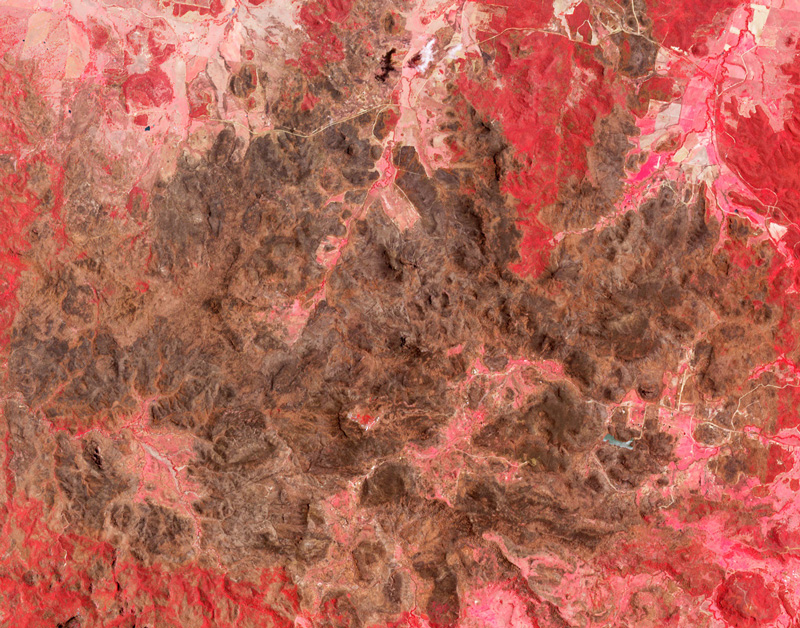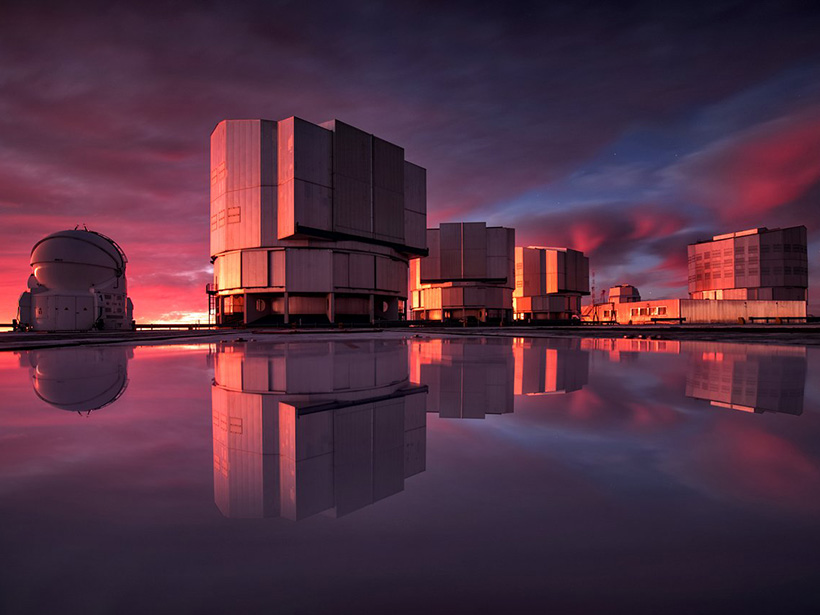
When the European Southern Observatory (ESO) selected Cerro Paranal, a 2,664-meter mountain in Chile’s Atacama Desert, to host its Very Large Telescope (VLT), it touted the location as “the best continental site known in the world for optical astronomical observations, both in terms of number of clear nights and stability of the atmosphere above.”
Cerro Paranal remains one of the best observing sites on the planet. Yet it’s not as pristine as it was at the time of its selection, in 1990. A study released last September showed that temperatures have climbed and jet streams are more troublesome, making the VLT’s observations of distant stars, galaxies, and exoplanets a tiny bit fuzzier.
“The main motivation of this study was to raise awareness among the astronomical community that climate change is impacting the quality of observations,” said Faustine Cantalloube, an astrophysicist at Laboratoire d’Astrophysique de Marseille and lead author of the report.
“Long term, we’re concerned about how climate change will affect the viability of certain observing sites.”
“As atmospheric conditions influence the astronomical measurements, it is important to be prepared for any changes in the climate,” agreed Susanne Crewell, a coauthor and a professor of meteorology at the University of Cologne. These preparations are especially relevant as ESO is building the Extremely Large Telescope (ELT), a 39-meter behemoth that will be the largest telescope in the world, on a peak about 20 kilometers from Paranal. ELT is expected to be a “workhorse” for decades, said Crewell.
Astronomers are just beginning to consider how those changes are affecting observations or might affect them in the years ahead. Potential problems include reduced “seeing”—the clarity with which a telescope observes the universe—plus greater risk from forest fires and a need for more power-consuming air-conditioning to keep telescope mirrors cool.
“Long term, we’re concerned about how climate change will affect the viability of certain observing sites,” such as Paranal and others in Chile, said Travis Rector, an astronomer at the University of Alaska Anchorage and chair of the American Astronomical Society Sustainability Committee. “Will we enjoy the same quality observing conditions many years down the road?”
Evaluating the VLT as a Test Case
Paranal is the first observatory for which scientists have studied that question. Cantalloube’s team compiled more than 3 decades of weather observations made at the site, including temperature, wind speed and direction, and humidity. The study also included a reanalysis of information from two European climate databases that date to 1980.
The records revealed a temperature increase of 1.5°C over the study period. The change is important because the VLT’s domes are cooled during the day to match the expected ambient temperature at sunset. If the telescope mirrors are warmer than the air temperature, heat waves ripple above them like those above a desert highway on a summer afternoon, blurring the view.
The VLT’s current cooling system was designed to maintain a temperature no higher than 16°C because when the telescopes were designed, sunset temperatures exceeded that value roughly 10% of the time. In 2020, though, they did so roughly one quarter of the time. As a result, Cantalloube said, air-conditioning capacity, as well as cooling capacity for many telescope instruments, will need to be increased in the future as the temperature continues to rise (perhaps by up to 4°C by the end of the century, according to some models).
The study also found that changes in the jet stream cause periodic increases in wind shear in the upper troposphere, particularly during El Niño events, creating a blurring effect known as a wind-driven halo. The VLT’s four component 8-meter telescopes are equipped with adaptive optics, which use lasers and deformable mirrors to create and focus an artificial “guide star” in the upper atmosphere, compensating for most of the blurring. But turbulence from the wind shear is making it tougher for the system to work. That’s particularly troublesome for efforts to image exoplanets, which require both high resolution and high contrast, the study noted.
“Monitoring meteorological parameters on site is one way to make the best out of the telescope time thanks to an adapted observing schedule,” said Cantalloube. For example, “some observations are less affected by humidity and some more, so if we know in advance the atmospheric humidity content, we can schedule observing programs accordingly.”
Last August, a fire on California’s Mount Hamilton burned one residence and damaged others at Lick Observatory and barely missed some of the telescopes.
Cantalloube said her team is continuing to evaluate the Paranal data while expanding its work to study conditions at major observatories in Hawaii, Arizona, and the Canary Islands.
Threats on the Ground
Rector notes that climate challenges aren’t limited to the quality of the view, though. “The most obvious threat is forest fires,” he said. “In recent years we’ve seen several major fires come near observatories, especially in California.”
Last August, for example, a fire on California’s Mount Hamilton burned one residence and damaged others at Lick Observatory and barely missed some of the telescopes. A month later, another fire threatened Mount Wilson Observatory, near Pasadena. Siding Spring Observatory in Australia lost its lodge for visiting astronomers and other structures in 2013, and the country’s Mount Stromlo Observatory lost several major telescopes in 2003.

“Many observatories are remote, they have limited access, so defending them against forest fires can be very difficult,” Rector said. “They’re the most vivid threat.”
Proposed Solutions
One proposed solution to climate change could actually cause more problems for astronomy, Rector said. Some climate scientists have suggested that injecting aerosols into the upper atmosphere could reduce the amount of sunlight reaching the surface, perhaps reversing the warming trend. However, that would also reduce the amount of light from stars and other astronomical objects reaching the surface. “Aerosols are probably best saved as a last-ditch Hail Mary,” Rector said.
Cantalloube and others said that astronomers also must reduce their own carbon footprint by reducing travel, cutting back their reliance on energy-guzzling supercomputers, and taking other steps. “Technological developments can cope with these subtle effects due to climate change,” Cantalloube said. “I’m more concerned about the way round: How can we make our observatories greener?”
—Damond Benningfield ([email protected]), Science Writer
This story is a part of Covering Climate Now’s week of coverage focused on “Living Through the Climate Emergency.” Covering Climate Now is a global journalism collaboration committed to strengthening coverage of the climate story.
Citation:
Benningfield, D. (2021), Making the universe blurrier, Eos, 102, https://doi.org/10.1029/2021EO156996. Published on 13 April 2021.
Text © 2021. The authors. CC BY-NC-ND 3.0
Except where otherwise noted, images are subject to copyright. Any reuse without express permission from the copyright owner is prohibited.

